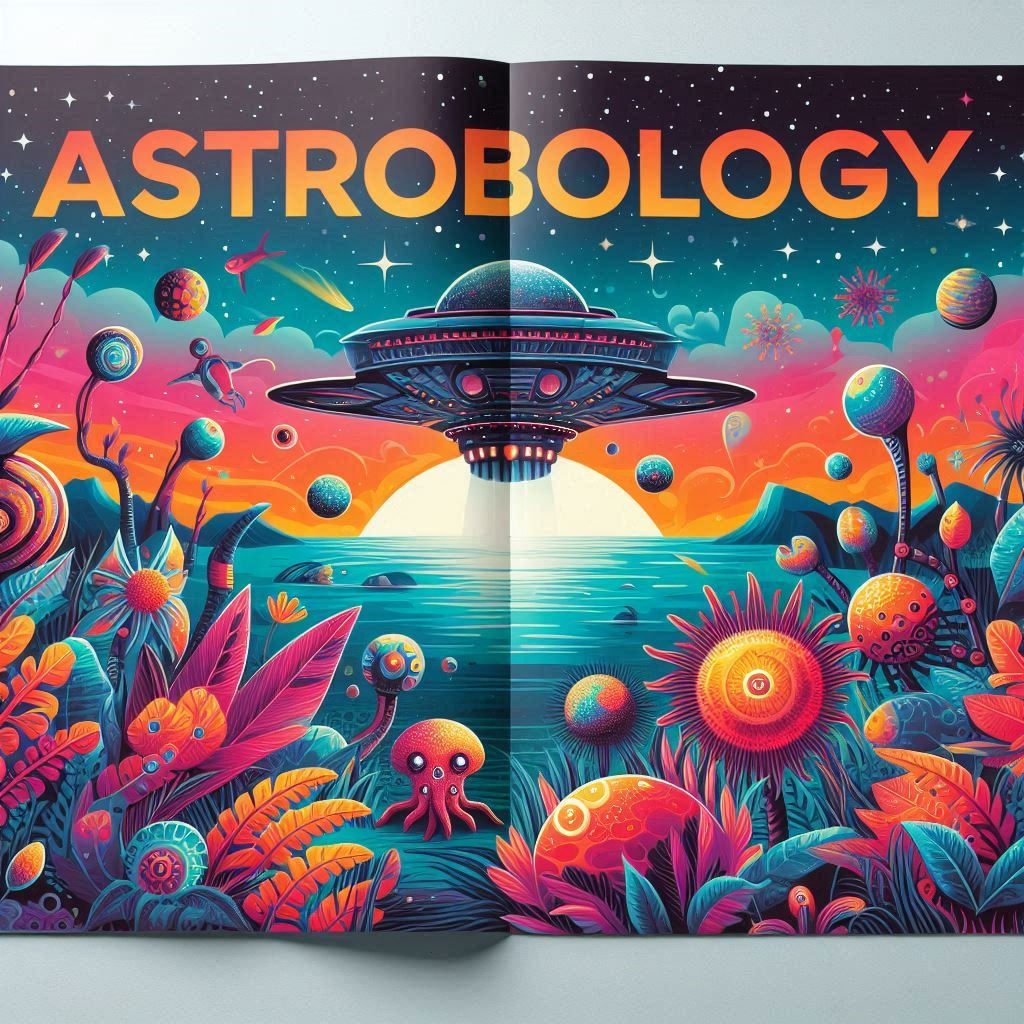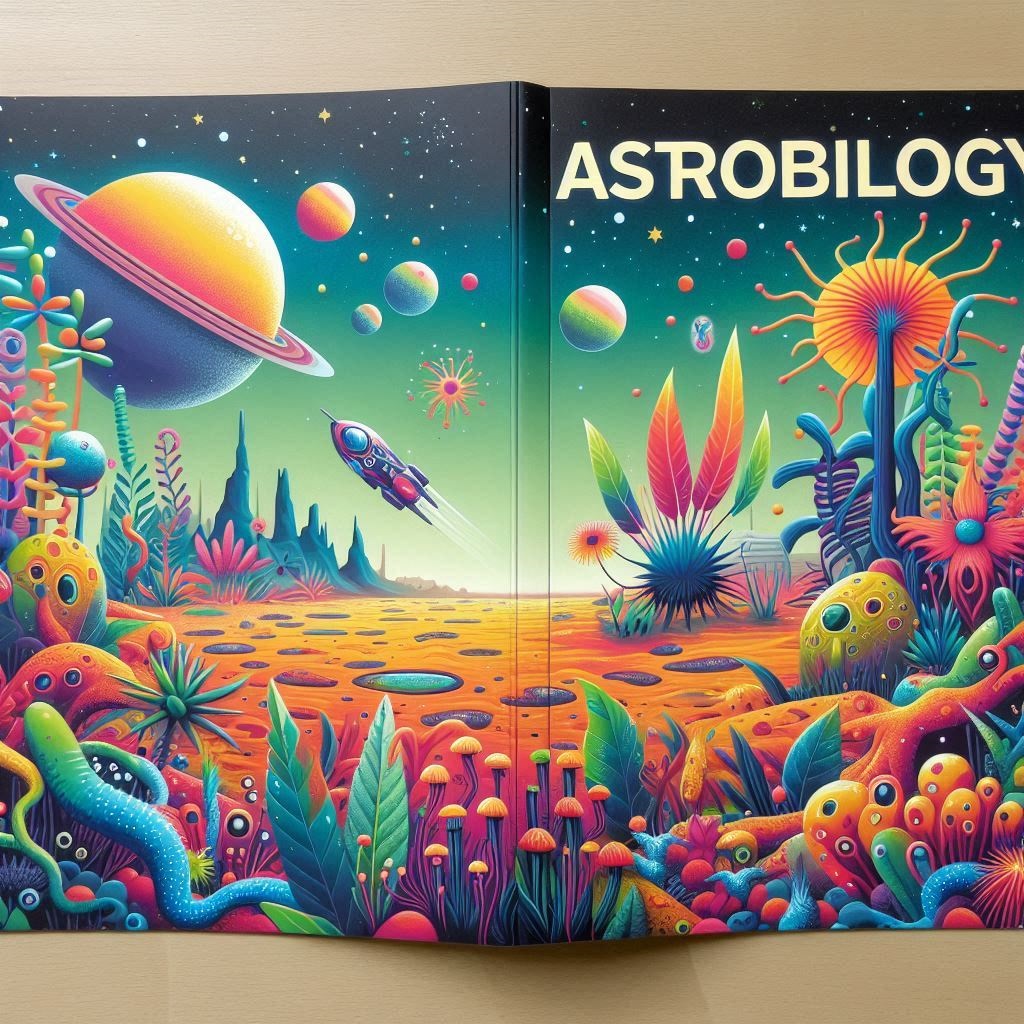Introduction to Astroecology
Astroecology is an emerging scientific field focusing on the integration of ecological principles with space exploration. It aims to develop sustainable systems for human habitation on other planets and in space habitats. This interdisciplinary approach combines knowledge from NASA, ESA, and academic research to address the challenges of living in extraterrestrial environments.
The Role of Astroecology
Astroecology is a crucial component of modern space exploration and habitation strategies. Its primary role is to design and manage closed-loop ecosystems that ensure the sustainability of human life in extraterrestrial environments. These systems are essential for missions to Mars, the Moon, and other celestial bodies, where traditional support systems are impractical.
One key aspect of astroecology is the development of life support systems that replicate Earth-like conditions. This includes creating environments that can support plant growth, produce oxygen, and recycle water and nutrients. For instance, NASA’s Biomass Production System explores how plants can be cultivated in space to provide food and oxygen.
Astroecology also focuses on the management of waste and resource efficiency in space habitats. Effective waste recycling and resource management are vital for maintaining closed ecosystems where waste products are reused, and resources are conserved. Projects such as the European Space Agency’s Water Recovery System demonstrate advancements in recycling wastewater into clean water for reuse.
The role of astroecology extends to supporting psychological well-being of astronauts. Long-term missions can lead to isolation and stress, so astroecological designs often incorporate elements of natural environments to improve mental health. Research from the NASA Space Biology Program highlights how plant growth and green spaces can positively affect astronaut well-being.
Additionally, astroecology contributes to scientific research on Earth by developing technologies and methods that can be applied to environmental and agricultural challenges. Techniques developed for space can improve sustainability practices on Earth. For more on this, see the Scientific American article on space technology applications.
In summary, astroecology plays a pivotal role in ensuring that human space missions and extraterrestrial settlements are viable and sustainable. Its focus on creating self-sustaining environments, managing resources efficiently, and supporting human health is critical for the future of space exploration and habitation.
Principles and Practices
Astroecology is guided by principles such as closed-loop systems, which aim to minimize waste and maximize resource use efficiency. Biodiversity is also crucial for maintaining ecosystem stability and resilience. Practices involve designing habitats that can support plant growth, waste recycling, and energy efficiency in space environments. Detailed practices can be explored in the Journal of Space Resources.
Here’s a closer look at these principles and practices:
1. Closed-Loop Ecosystems
Astroecology emphasizes the design of closed-loop ecosystems where waste products are recycled, and resources are reused. This principle is essential for long-duration space missions and planetary colonization. Technologies like the Advanced Plant Habitat are developed to support plant growth and nutrient recycling in space.
2. Resource Efficiency
Efficient use of resources is critical in space environments where resources are limited. Astroecology practices focus on maximizing resource use and minimizing waste. Techniques such as the Water Recovery System from the European Space Agency help recycle wastewater into clean water, demonstrating resource efficiency in space.
3. Sustainability and Resilience
Astroecology aims to create systems that are both sustainable and resilient to disruptions. This includes designing systems that can withstand failures and adapt to changing conditions. The Nanosatellite Missions showcase how small, resilient systems can contribute to larger space missions.
4. Integration of Biological and Technological Systems
Effective astroecology integrates biological and technological systems to create a harmonious environment. This includes combining biological organisms (like plants and microorganisms) with technological systems (such as life support and environmental control systems). The Plant Growth System developed by NASA exemplifies this integration.
5. Supporting Human Health and Well-being
The design of astroecological systems also considers human health and well-being. Providing a comfortable and psychologically supportive environment is crucial for long-term missions. The NASA Space Station Research emphasizes how incorporating natural elements and providing space for physical activity can enhance astronauts’ mental health.
These principles and practices guide the development of technologies and systems essential for sustaining human life in space. By focusing on closed-loop systems, resource efficiency, resilience, integration, and human well-being, astroecology ensures that space missions are both viable and sustainable.

Global Impact and Case Studies
Astroecology has significant global implications, influencing not only space missions but also technologies that benefit Earth. Notable case studies include the Zealot Project, which focuses on developing sustainable habitats, and research from USRA, highlighting advancements in life support systems. These projects demonstrate how astroecology can drive innovation and sustainability.
Here are some notable case studies and their global impact:
1. The Mars Society’s Mars Desert Research Station
The Mars Desert Research Station (MDRS) in Utah, USA, is a key example of astroecology applied to terrestrial environments. This facility simulates conditions on Mars and tests closed-loop systems for life support, resource recycling, and sustainable living. Insights gained from MDRS contribute to both space mission planning and innovative ecological practices on Earth.
2. NASA’s Advanced Plant Habitat
NASA’s Advanced Plant Habitat (APH) is a research facility aboard the International Space Station (ISS) designed to grow plants in microgravity. The success of APH helps us understand plant growth and resource use in space. The principles learned from this research are being applied to improve agricultural practices on Earth, particularly in urban and vertical farming.
3. European Space Agency’s MELISSA Project
The MELISSA Project (Micro-Ecological Life Support System Alternative) aims to develop a self-sustaining biological life support system. This project focuses on creating a closed-loop ecosystem that can support human life on long-duration missions. MELISSA’s advancements contribute to both space exploration and sustainable resource management on Earth.
4. NASA’s Veggie Plant Growth System
The Veggie Plant Growth System aboard the ISS is another significant example. It demonstrates the ability to grow edible plants in space, providing fresh food for astronauts and reducing dependency on resupply missions. This technology also informs sustainable agricultural practices, such as hydroponics and aeroponics, which can be used to address food security on Earth.
5. BioNautica’s BioNautica Project
The BioNautica Project focuses on creating closed-loop systems for long-duration space missions using biological systems. It aims to simulate extraterrestrial conditions and develop technologies that enhance resource efficiency and sustainability. The project’s findings help advance both space mission technologies and sustainable practices in harsh environments on Earth.
These case studies highlight how astroecology is not only paving the way for sustainable space exploration but also offering valuable lessons and technologies that can be applied to environmental and resource management on Earth. The innovations developed through astroecology research have the potential to address pressing global challenges such as food security, resource conservation, and ecological sustainability.
Challenges and Future Directions
For ongoing updates, check Frontiers in Space Technology.
Challenges and Future Directions in Astroecology
Astroecology, while promising, faces several challenges and opportunities as it continues to evolve. Addressing these challenges and exploring future directions are crucial for advancing our understanding of sustainable life support systems and their applications both in space and on Earth.
1. Technical Challenges
Developing closed-loop life support systems for space environments presents significant technical hurdles. Key challenges include ensuring reliable waste recycling, managing nutrient flow, and maintaining plant health in microgravity conditions. Research in systems like NASA’s Advanced Plant Habitat and ESA’s MELISSA Project is essential for overcoming these barriers.
2. Environmental and Ethical Considerations
Astroecology must address environmental and ethical issues related to biological contamination and planetary protection. Ensuring that experiments and technologies do not inadvertently harm extraterrestrial environments is crucial. Efforts to mitigate these risks are guided by NASA’s Planetary Protection policies and international agreements.
3. Integration with Earth-Based Systems
Applying astroecology principles to terrestrial contexts, such as urban and vertical farming, requires adaptation of space-based technologies to local conditions. This includes scaling down systems developed for space missions to suit Earth-based applications. Collaboration between space agencies and agricultural researchers is key to making these technologies viable for widespread use.
4. Economic and Resource Constraints
Astroecology research and technology development often face high costs and limited funding. Balancing the investment in cutting-edge research with practical outcomes and commercial viability is a challenge. To address this, partnerships between government space agencies, private sector companies, and academic institutions are crucial. For instance, NASA’s technology transfer programs help bridge this gap.
5. Future Directions and Opportunities
The future of astroecology holds several exciting opportunities:
- Advanced Habitat Design: Continued research into space habitat design will enhance the sustainability of life support systems. Innovations like inflatable habitats and modular systems are being explored.
- Bio-Dome Experiments: Large-scale bio-dome experiments can provide valuable data on closed-loop ecosystems and their long-term viability.
- Integration with Earth Systems: Applying space-based ecological principles to Earth challenges, such as urban farming and disaster response, can yield significant benefits.
- Interdisciplinary Research: Collaboration across disciplines, including ecology, engineering, and planetary science, will drive innovation and address complex challenges.
By addressing these challenges and leveraging emerging opportunities, astroecology can play a pivotal role in advancing sustainable space exploration and enhancing environmental stewardship on Earth.
Benefits of Astroecology
The benefits of astroecology extend beyond space exploration. It leads to advancements in sustainable technologies and environmental management that can be applied on Earth. Innovations developed for space habitats often contribute to improving resource efficiency and waste management on our planet. For more on these benefits, visit Brookings Institution.
FAQs
Q: What is the main goal of astroecology?
A: The main goal of astroecology is to develop sustainable life support systems for space habitats by applying ecological principles to extraterrestrial environments.
Q: How does astroecology impact space missions?
A: Astroecology impacts space missions by providing solutions for creating self-sustaining ecosystems that can support human life during long-duration missions and in extraterrestrial colonies.

Q: What is the scope of astrobiology?
Astrobiology, often referred to as the science of the origin, evolution, and distribution of life in the universe, encompasses a broad and interdisciplinary scope. It integrates aspects of biology, chemistry, astronomy, and planetary science to explore fundamental questions about life beyond Earth. Here’s a detailed look at the scope of astrobiology:
1. Search for Extraterrestrial Life
One of the primary goals of astrobiology is to search for extraterrestrial life. This involves investigating potential habitats beyond Earth, such as Mars and the icy moons of Saturn and Jupiter. Missions like NASA’s Perseverance Rover aim to identify signs of past microbial life on Mars.
2. Understanding the Origin of Life
Astrobiology seeks to unravel the origin of life by studying how life might have arisen on Earth and the conditions required for life to start. Researchers investigate early Earth environments and simulate prebiotic chemistry to understand how life could have formed.
3. Study of Extremophiles
Studying extremophiles—organisms that thrive in extreme environments on Earth—provides insights into the potential for life in harsh extraterrestrial conditions. Examples include thermophiles and acidophiles that live in extreme temperatures and acidic conditions.
4. Planetary Protection and Habitability
Astrobiology also involves planetary protection to prevent contamination of other planets by Earth organisms and vice versa. This is crucial for preserving the integrity of potential extraterrestrial ecosystems. NASA’s Planetary Protection policies and guidelines are key to this effort.
5. Habitability of Exoplanets
Another significant area is evaluating the habitability of exoplanets.
Q: what does an astrobiologist do?
An astrobiologist is a scientist who studies the origin, evolution, distribution, and future of life in the universe. This interdisciplinary field combines elements of biology, chemistry, astronomy, and planetary science to explore fundamental questions about life beyond Earth. Here’s an overview of the key activities and responsibilities of an astrobiologist:
1. Research on Origins of Life
Astrobiologists conduct research to understand how life might have originated on Earth. This involves studying prebiotic chemistry, which looks at the chemical processes that could have led to the formation of the first living organisms. They analyze sample return missions and meteorites for clues about early life processes.
2. Exploring Habitable Environments
Astrobiologists study extremophiles—organisms that thrive in extreme environments on Earth—to understand how life might exist in similar conditions elsewhere. They investigate exoplanets and moons of our solar system (like Europa and Enceladus) to identify locations with potential habitability.
3. Searching for Extraterrestrial Life
A significant part of an astrobiologist’s work involves the search for extraterrestrial life. This includes analyzing data from space missions and rovers on Mars, as well as using radio telescopes and other instruments to detect potential signs of intelligent life, such as technosignatures.
4. Modeling and Simulating Life
Astrobiologists use computer models and simulations to predict how life might arise and evolve under different environmental conditions. They develop biological models that simulate possible life forms and their interactions with various planetary environments.
5. Interdisciplinary Collaboration
Astrobiologists often work with teams of scientists from diverse fields, including chemists, geologists, physicists, and engineers. This collaboration helps integrate findings from various disciplines to build a comprehensive understanding of the potential for life in the universe.
And some others are also
Disclaimer and Caution
This article provides an overview of astroecology based on current research and expert opinions. The field is rapidly evolving, and new discoveries may alter the understanding and applications of astroecology. Always consult recent research and expert sources for the most up-to-date information.



